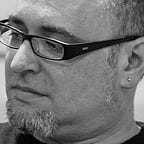Methodology for educational making activities (VII)
Inclusion in makerspaces
Inclusion of youth at risk in maker educational activities
Maker education attempts to be as inclusive as possible: everyone, regardless of their gender, age or social economic background should be able to engage with maker education and benefit from the numerous learning outcomes it can provide.
Educators and facilitators, may however find it challenging to involve certain groups of individuals, notably youth at risk. Disadvantaged youth may for example struggle with open-ended and project-based approaches to learning, which is likely to result in them feeling frustrated, and consequently risks jeopardising their long term involvement in maker education.
Main possible causes of tension for youth at risk, in the context of maker education, include the aesthetic elements of design and creation (particularly when more complex machinery is involved, such as cnc machines). As well as this, the need to venture outside of comfort zones with multi-faceted projects, which could include interdisciplinary elements can also appear daunting. This presents a clear need for educators to be able to support youth throughout their projects, especially for those who may particularly struggle with these aspects.
Digital fabrication machines allow any user to produce nice looking, professional and meaningful gadgets. However, often, users can stagnate onto a relatively effortless work, which does not include any computation effort or complex constructive challenges.
The point of maker education, as well as to educate on digital fabrication, is to highlight the importance of the process over the final product, and to encourage learners to engage in challenging learning experiences. The objective of the educator, especially when dealing with disadvantaged children, should be to encourage individuals to avoid settling projects that are more simple and trivial.
This said, the opposite extreme is just as undesirable. Projects which are too complex are generally conducive to learners experiencing frustration and disappointment. Educators should find a balance when figuring out which activities and creative processes work best to engage learners. They should aim to avoid trivialisation of processes or equipment whilst appreciating what degrees of complexity should not be surpassed to ensure participants are still able to engage and learn.
How to create an environment of inclusion
Throughout the realisation of our activities, we have always searched for the best methods to encourage participation and successfully share knowledge. In our case, the design thinking process is the one that best adapts to this type of activity.
1. Empathize
- Generate expectation, emotion, interest.
- If it is the first session, each participant, support staff and facilitator is presented.
- Ask concept questions, to know the expectations of each participant. This gives an opportunity to listen and reduce any doubt.
2. Define
- Explain clearly the development of the activity, step by step. (e.g that we will work with recycled materials, in groups. The tasks will be to an engine, attach a battery holder and a battery and connect them altogether before testing).
- Give some instructions, precautions and processes that should be taken when in the space (eg, caution should be exercised with the 3D printer by …)
- Videos or prototypes could be shown to give an idea of the concept and what is aiming to be achieved.
- If it is not the first session, it may be beneficial to analyse what happened in the previous session to be clear about what will be worked on during this session.
3. Ideate
- The activity starts. Participants organise themselves into groups or pairs.
- Materials are given to each group.
- Participants begin to think, devise, draw and invent.
4. Prototype
- Work with cardboard, wood, stationery and more, to allow them to develop their ideas and produce an initial prototype.
- Participants should discuss their feelings, their results and what has been learnt among their groups as well as among the larger class. This can help them to receive feedback and advice on how to improve or how to identify which sections of their project have particularly worked well. The contribution of ideas must always be from a positive perspective and aim to motivate.
- The final prototype should be real-sized so that it resembles as much as possible the final design.
5. Test
- The prototype is tested and any necessary corrections are made.
- If the activity will continue in another session, it is advised to define what has been achieved in this session, what stage the team has reached and devise a plan for how they will use their time in the next session.
Engaging young people in Maker Educational Activities
Makerspaces are providing more and more spaces for learning around the world, however the skills that the participants tend to learn in these spaces are outside of the required school curriculum. The traditional education system has difficulty recognising student achievements and skills which are learnt outside of the standard setup and procedures. However, there is a tried and tested way to allow participants to recognise their achievements in these makerspace environments which can largely benefit the young participants.
Introducing a badging system into the makerspace can provide students with a chance to be recognised for the skills and competences they have learnt and developed whilst working in the space. Open badges are recognition and certification systems which can certify that a new skill or piece of knowledge has been learnt.
The badges are a combined empirical and conceptual effort, which when applied to the makerspaces and learning processes that occur in these environments, can help encourage the engagement of younger people in them.
This methodological guide has been made by the consortium of the European Project, Makerspace for Inclusion Nº 2018-l-BE0S-KA205–002425, with the participation of the following associations:
Digijeunes (France), Timelab (Belgium), Horizonlab (Italy), Nod Makerspace (Romania), MakerConvent-Trànsit Projectes (Spain).
